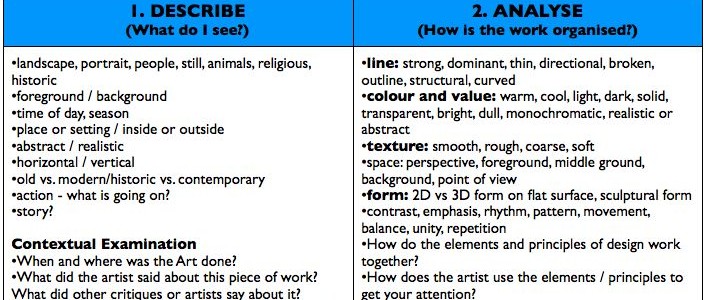
Activity Summary:
This activity is useful during the first week of the Campus Architecture/Campus Art Analysis assignment. This activity introduces students to a guided rhetorical analysis of artwork.
Instructions:
“This activity is useful during the first week of the Campus Architecture/Campus Art Analysis assignment. Students are bringing their own versions of analysis and seeing to this class, so initial activities such as a basic description and contextualizing activity such as this one will get them to see that they DO indeed have plenty of insight that can fill the paragraphs in their papers. Additionally, some students may be art majors with clear ideas of what “art critique” looks like. This activity is a chance to show them a rhetorical perspective on the viewing art.”
- Before students come in the classroom, I spread out pieces of art at the students’ seats. The artwork is labeled with the title and the artist name.
- When students sit at their seats, they work by themselves on the “Description and Analysis” worksheet (included in downloadable zip file). Students are simply using vivid language at this point to practice articulating what they “see,” what stands out and draws most attention. Essentially, students are creating an objective description.
- Once working individually for 12-15 minutes, the students should pair up and begin with the “Context and History Discussion” portion of the worksheet.
- As you walk around the room and talk with students about what they are seeing and saying, you might prompt them to consider the purpose the artist had with this particular piece and how context might affect how that purpose would affect how that piece is viewed.
- After the students have had a chance to discuss the pieces of artwork in pairs, it is useful to verbalize the difficulty of doing analysis for the first time. Ask students which parts of the worksheet were easy to answer and which parts left them coming up blank on answers. The difficult portions will provide for strong teachable moments where you can pull up a new piece of artwork on the screen and suggest ways to draw out the “problem information” from the piece.